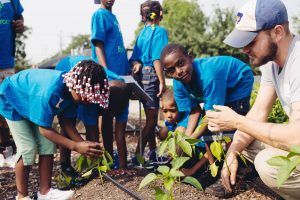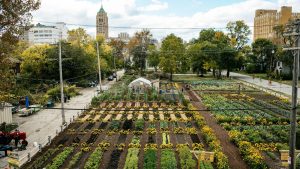With over 60% of 18+ Americans drinking coffee everyday, it is important that we consume in an ethical and sustainable manner. My own personal coffee recipe is an iced coffee with oat milk, brown sugar, and cinnamon. There are some very easy swaps that can be made in order to make your daily coffee more sustainable!
First the basics: Avoid single use plastics.
On the go:
It can be very convenient to pick up a Starbucks drink, and throw the cup out, but bringing a reusable cup is one easy way to reduce waste at Starbucks. To go coffee cups don’t have to be fancy and expensive either, an old mason jar is a great transport option, as are your daily use cups if you don’t mind not having a lid!
Buying coffee on the go can often mean bottled drinks. If you must choose these as your drink, try to choose a glass or aluminium container as they are more recyclable.
To avoid even more environmental impacts, make your coffee at home, and you won’t have to buy a fancy new coffee cup or generate waste.
At Home:
One major thing to avoid when making your coffee at home are disposable K-Cups. Tens of billions of these plastic cups have ended up in our landfills. The convenience of a single cup coffee brewer is undeniable, so making the swap to a reusable cup is an easy way to dramatically reduce the waste that you are producing. Another singl e cup brewing option that is low waste is a reusable pour over. Mine is made of stainless steel and does not require a filter, but others can be ceramic or glass an
e cup brewing option that is low waste is a reusable pour over. Mine is made of stainless steel and does not require a filter, but others can be ceramic or glass an d some need a paper filter. A benefit of this coffee brewing method is that the only waste produced can be composted. If you are a heavy coffee drinker and one cup is not enough, making one large pot of coffee is more sustainable (and convenient). A French press is a great way to make a pot of coffee with little waste, and traditional coffee pots are a classic as well. There are many low waste methods of brewing coffee that you can tailor to your lifestyle.
d some need a paper filter. A benefit of this coffee brewing method is that the only waste produced can be composted. If you are a heavy coffee drinker and one cup is not enough, making one large pot of coffee is more sustainable (and convenient). A French press is a great way to make a pot of coffee with little waste, and traditional coffee pots are a classic as well. There are many low waste methods of brewing coffee that you can tailor to your lifestyle.
The Beans:
Choosing the coffee itself can feel like a total crapshoot, there are so many options and so many different labels claiming different things.
At the grocery store, look for fair trade certifications. Many large grocery stores carry local roasting companies and finding woman-owned or black-owned coffee options is becoming easier and easier. Supporting small companies is preferable to choosing a Foldgers, Starbucks, or Dunkin Donuts blend, even though the name is more familiar.
One way that I ensure I am getting sustainable coffee is to buy beans from my favorite local coffee shops. Many sell the same beans that they use to make their drinks, and baristas can give you plenty of information on it. Independently owned cafés also often have specifically chosen roasting companies that they buy beans from, meaning that more information on the brand should be available. This ensures a delicious cup of coffee, and you are supporting local businesses.
The Creamer:
Since black coffee is undeniably an acquired taste, most people opt to add a creamer. Choosing a plant milk over cow’s milk dramatically decreases the environmental impact of one cup of coffee. Flavored coffee creamers are a popular favorite, but tend to be made with unsustainably harvested ingredients like palm oil. An easy way to replace these flavored creamers is to make your own. Infused syrup recipes are all over the internet and can be added to a plant milk of your choice. 



